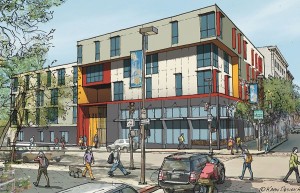 Governor Brown angered a lot of people in the local government and environmental communities when he proposed “by-right” state approval of multifamily housing consistent with existing local zoning in his last budget. Negotiations are set to conclude tomorrow, based on the budget deal.
Governor Brown angered a lot of people in the local government and environmental communities when he proposed “by-right” state approval of multifamily housing consistent with existing local zoning in his last budget. Negotiations are set to conclude tomorrow, based on the budget deal.
Carol Galante, a colleague at UC Berkeley, penned a recent op-ed in the Sacramento Bee in support:
The state’s entitlement process has become unnecessarily complicated and cumbersome. The permitting process for new development in California coastal communities takes over 30 percent longer than in the average American city.Not surprisingly, this greatly increases the costs of development: in the Bay Area, each additional layer of independent review is associated with a 4 percent increase in a jurisdiction’s home prices.
Other states, like Massachusetts, have tackled the problem in a similar fashion to Brown’s, showing that it doesn’t need to be this way. California’s “by right” proposal would allow new attached housing – consistent with existing general plans and zoning rules, in urban infill locations with at least a portion dedicated for families at the lower end of the income scale – to be deemed good to go. This proposal would put an end to lengthy process hearings and stall tactics often employed by special interests or “NIMBY” opponents.
I’ve previously argued that this kind of approach is needed, but I remain concerned that the proposal could open the door to sprawl approvals. As the Planning and Conservation League noted in their letter on the proposal:
The proposal’s site requirements allow benefits to be accessed by developments outside urbanized areas. Section 65913.3 (b) (3) requires the site to be adjacent to developed parcels, but says nothing about the characteristics of the surrounding area. Two lone houses in an otherwise-undeveloped area could meet the language’s standard. This would promote sprawl, which requires long-term maintenance of roads, highways and other infrastructure that neither the state nor local governments can afford.
The easiest solution would be to limit the by-right eligibility to projects in “transit priority areas” or areas within 1/2 mile of a major transit stop. In addition, the projects could have a “vehicle miles traveled” (VMT) performance standard to ensure they actually encourage transit use.
Because while we need more housing in many parts of California, we don’t need more sprawl. And that one possibility is an unfortunate aspect of an otherwise necessary approach to addressing the housing crisis in the state.
Leave a Reply
You must be logged in to post a comment.


